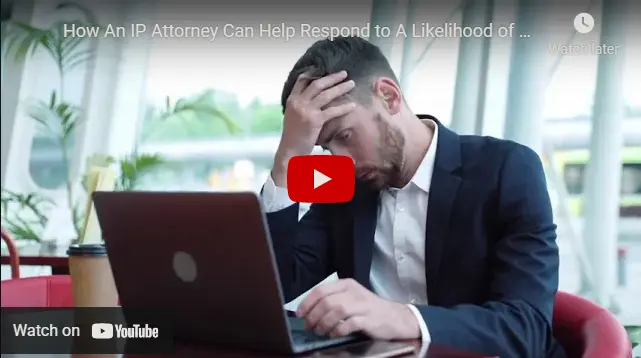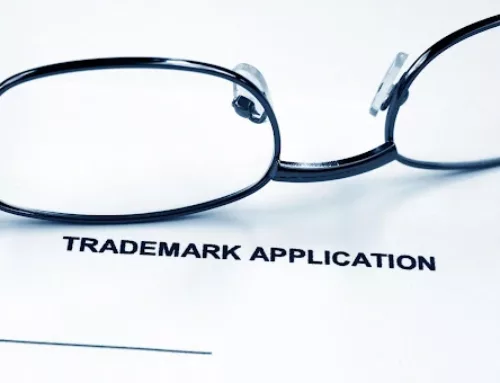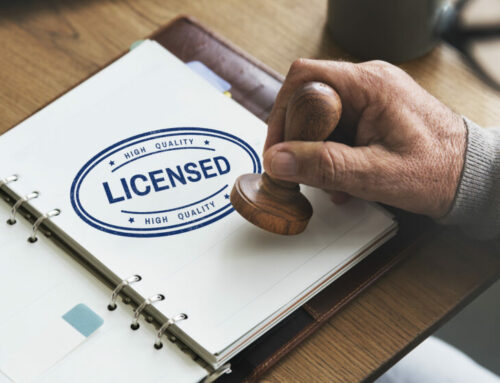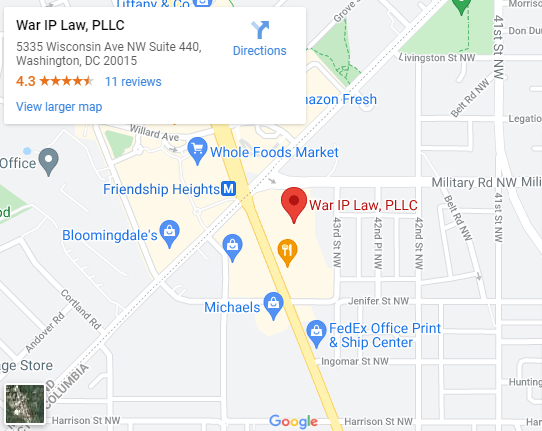The process of obtaining a trademark registration can be stressful and overwhelming. The United States Patent and Trademark Office (USPTO) states that for a trademark to qualify for registration, it must be distinct and unlikely to be confused with a registered mark with similar goods and/or services.
When an application to register a trademark is submitted, an examining attorney will review the application and ensure that it does not conflict with any other registered trademarks or pending applications. If it is deemed too similar, the application may be refused on the grounds of likelihood of confusion.
There are several factors to take into consideration when making a case against a likelihood of confusion rejection. In many cases, it is possible to overcome the likelihood of a confusion rejection, however, seeking legal advice can make all the difference. At War IP Law, we believe that proper knowledge of trademark law helps prevent likelihood of confusion rejections. Call our experienced intellectual property attorneys today at 202-800-3754 to learn more about your options.
What Is the Likelihood of Confusion Rejection?
Section 2(d) of the Trademark Act, 15 U.S.C. §1052(d) states that a trademark shall be rejected if it consists of or comprises a mark that resembles a mark registered in the Patent and Trademark Office when the registered mark is for similar goods and/or services. There cannot be confusion over the source or sponsorship of the goods or services.
A trademark is used to exclusively identify a product as originating from a specific company, therefore recognizing ownership of the product. This is similar to a service mark, which distinguishes the source of a service as opposed to a product. If a mark (trademark or service mark) looks similar to another existing logo for similar goods and/or services, such that an average consumer may assume they originate from the same company, an examiner may issue a likelihood of confusion rejection.
With this being the case, the examining attorney for the USPTO is responsible for determining whether or not there is a likelihood of confusion between the applicant’s mark and a previously registered mark. In re E. I. DuPont DeNemours & Co., 476 F.2d 1357, 177 U.S.P.Q. 563 (C.C.P.A. 1973)
What Are the Dupont Factors?
As discussed in the aforementioned court case, the United States Court of Customs and Patent Appeals discussed the factors that contribute to a likelihood of confusion rejection. In testing for likelihood of confusion, the following attributes are considered:
- Similarity or dissimilarity to the appearance, sound, connotation, and commercial impression of the marks
- Similarity or dissimilarity of the goods or services described in the application to those already in use by another mark
- Similarity or dissimilarity of established trade channels
- The conditions under which the products or services are purchased (g., quick and impulsive or careful and meticulous)
- Fame of the prior mark, based on sales, advertising, length of use, etc.
- Number and nature of similar marks
- Nature and extent of any actual confusion
- Length and time of concurrent use without evidence of actual confusion
- Variety of goods on which the mark is used or not used
- Potential market interference
- The ability of the applicant to exclude others from use of the mark on its goods
- The extent of potential confusion
When an examining attorney is considering a trademark or service mark application, they will evaluate the mark using the Dupont factors as well as the Trademark Act. It is important to note that for a likelihood of confusion to exist, the marks do not have to be exact or identical. Mere likeness or potential consumer confusion will warrant a likelihood of confusion rejection. Consider how the mark sounds when spoken, any visual likeness to other brands, or whether the mark creates a similar commercial impression as another company, in the minds of the public.
How Can I Overcome a Likelihood of Confusion Rejection?
The first step to avoiding a likelihood of confusion rejection is to arm yourself with knowledge of similar registered marks used with similar goods and/or services and other similar prior filed trademark applications. Understanding the multifaceted evaluation process used by the USPTO can save you time, money, and energy. To this point, the USPTO offers a free online Trademark Electronic Search System to help prevent such refusals.
Sometimes however, this is not enough, and one may experience an unexpected likelihood of confusion rejection. If the USPTO rejects a registration, they will provide an explanation regarding why it was denied. Following the rejection, the applicant has six months to respond.
It can be quite difficult to overcome a likelihood of confusion rejection, and arguing that two marks are dissimilar is often not enough. In some cases, a likelihood of confusion rejection cannot be overcome, or arguing against the likelihood of confusion rejection may not be cost effective. Visiting with an experienced intellectual property attorney at War IP Law can help you better understand all of your options to ensure your trademark avoids any likelihood of confusion rejection.
Contact an Experienced Trademark Attorney Today
A likelihood of confusion rejection can be disputed on a few different grounds. For example, even if the marks are similar, the differences in the goods or services offered may be vastly different. In this case, an argument could be made that a reasonable consumer would not be confused about the source of such goods, given how dissimilar they are. The applicant may also utilize polls or surveys to demonstrate that consumers do not find the marks confusingly similar. Alternatively, to overcome a likelihood of confusion rejection, the applicant may be able to obtain a consent agreement from the holder of the confusingly similar registered mark.
USPTO examiners are, above all, legal experts. As such, they value evidence and strong, objective argumentation. While overcoming a likelihood of confusion rejection may be difficult, in a number of cases t is not wholly impossible. When appealing such a rejection, it is important to present concrete evidence.
Our legal team understands the value of trademark registration when establishing or expanding a business, and we are dedicated to helping our clients overcome likelihood of confusion rejections. If you are facing such a rejection, there are options available. Consider contacting an experienced War IP Law trademark attorney today to discuss the ideal course of action for you.






